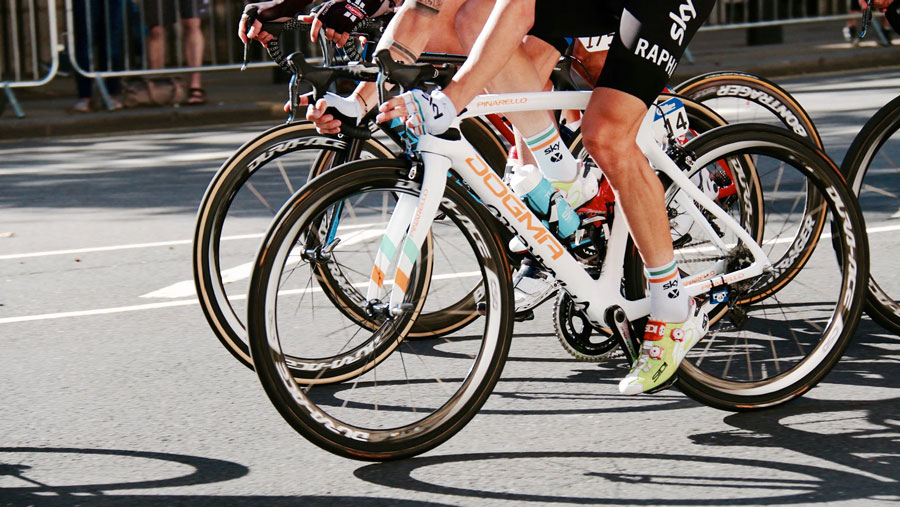
Is it necessary to use chamois cream before a ride?
The simple answer is: ‘YES’. Skin is incredibly sensitive to a range of challenges but, the inevitable rubbing of skin against clothing and bike saddle whilst cycling has been the downfall of many cyclists from the elite to weekend warriors. So common is the problem that it has a name, ‘saddle sore’. The term ‘chamois cream’ is historically related to the use of chamois leather in the padding of cycling shorts. As the padding has developed to use synthetic alternatives, so has the cream and its name: ‘anti-chafe cream’. Chamois cream is an essential part of any cyclist’s kit whether you’re a newcomer to cycling or an elite cyclist.
How to make riding a bike more comfortable
There are five points of contact when riding a bike: your feet, your hands, and your ‘undercarriage’! It is important to optimise each of the points of contact to enhance the comfort of your ride, and your performance. Using specialist cycling shoes along with appropriate socks and overshoes for the weather (i.e. thermal for cold conditions) will improve comfort, as will using padded gloves and bar tape to help reduce vibrations and improve comfort (applying double tape for long rides can offer added comfort). When it comes to your ‘undercarriage’, abrasions of the sensitive skin of the groin and buttocks from rubbing can be extremely uncomfortable and, can rapidly develop into blisters and open wounds which are not only painful but, can end your riding for some time. Using a chamois cream significantly reduces friction and reduces chafing of the perineum, groin, buttocks and thighs. On long rides, or on multi-day challenges, wearing two pairs of shorts – something I like to call ‘double bagging’ – can reduce the impact of the saddle on the nether regions, improving comfort and performance.
How to prevent chafing on long bike rides
Anti-chafe cream is crucial in reducing the friction which leads to chafing during long-rides. In addition, choosing an anti-chafe cream that has anti-inflammatory properties can reduce inflation and swelling leading to a reduction in chafing. Chamois cream application should be targeted. Whilst you can apply the cream to the skin or the shorts, take care to ensure that you cover all areas likely to be affected (perineum, groin, thighs and buttocks). Where to apply chamois cream is a very personal issue, however, in general, women should avoid very sensitive areas and focus on areas of skin (external areas). More is not always better, targeted application is more important than simply lathering it on in a haphazard way. Prevention is better than cure: reducing your chances of chafing before your ride should be your goal, dealing with chafing, sores and open wounds after the event will take time off your bike. In addition to anti-chafe cream, buy good quality shorts that fit correctly and ensure your shorts are clean and dry prior to your ride; wet shorts are a sure-fire way to chafing.
Do you wear underwear with your biking shorts?
No, never. Underwear increases friction and leads to greater problems with chafing. Newcomers to cycling often make the mistake of underwear due to the worry about contact between those sensitive parts directly onto shorts, particularly the issue of cleanliness and infection control. For this reason, there are several golden rules to avoid problems:
-
- Wash your shorts after every ride.
- Always fully dry your shorts before setting out for a ride (wet padding significantly increases the chances of chafing).
- Always use anti-chafe cream, particularly products with anti-bacterial ingredients which reduce the chance of infection, such as Bullet & Bone’s Protect & Care.
- Do not double dip! Chamois cream in pots allow cyclists to take a dip, apply cream to their nether regions and then come back in for a second dip! To reduce the chances of cross-infection, use a cream from a tube to eliminate double dipping.
- Always shower/bath post-ride, thoroughly washing your undercarriage.
Why are bicycle seats so small and hard?
Finding the right saddle is crucial to optimise comfort and performance. Whilst cyclists focus on ‘bike fit’, just as important is ‘saddle fit’. Selecting a saddle that suits your anatomy will improve support, allowing you to generate more power whilst reducing unwanted chafing. Bigger saddles might be more comfortable for very short rides however; the increased area in contact with your skin can lead to chafing. In contrast, a saddle that is too small can result is such discomfort that you move more on the saddle to find a more comfortable position which results in chafing. A saddle is a very personal part of a bike and you should spend time to get it right.
 Article written by Professor Greg Whyte OBE (PhD DSc FBASES FACSM)
Article written by Professor Greg Whyte OBE (PhD DSc FBASES FACSM)
